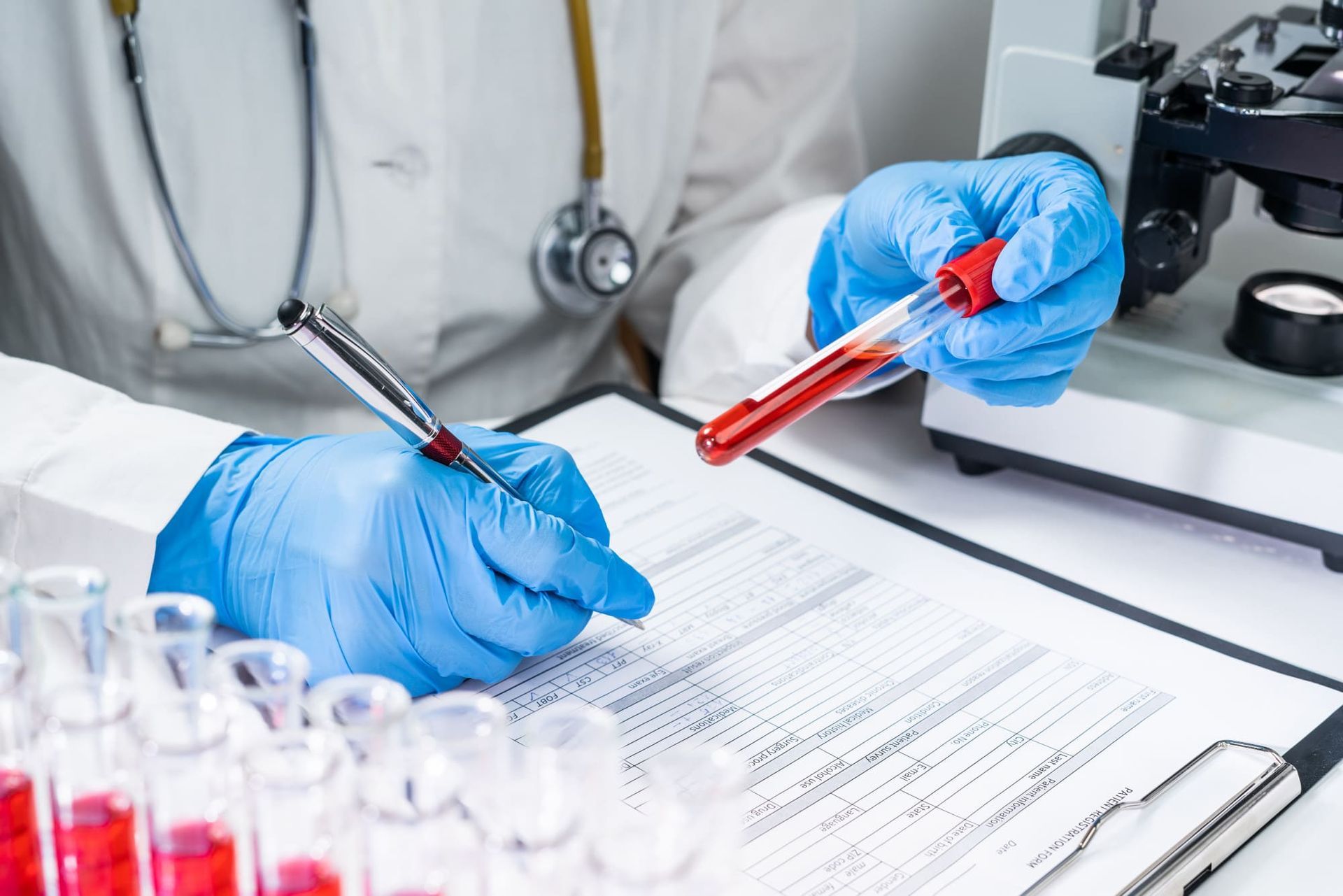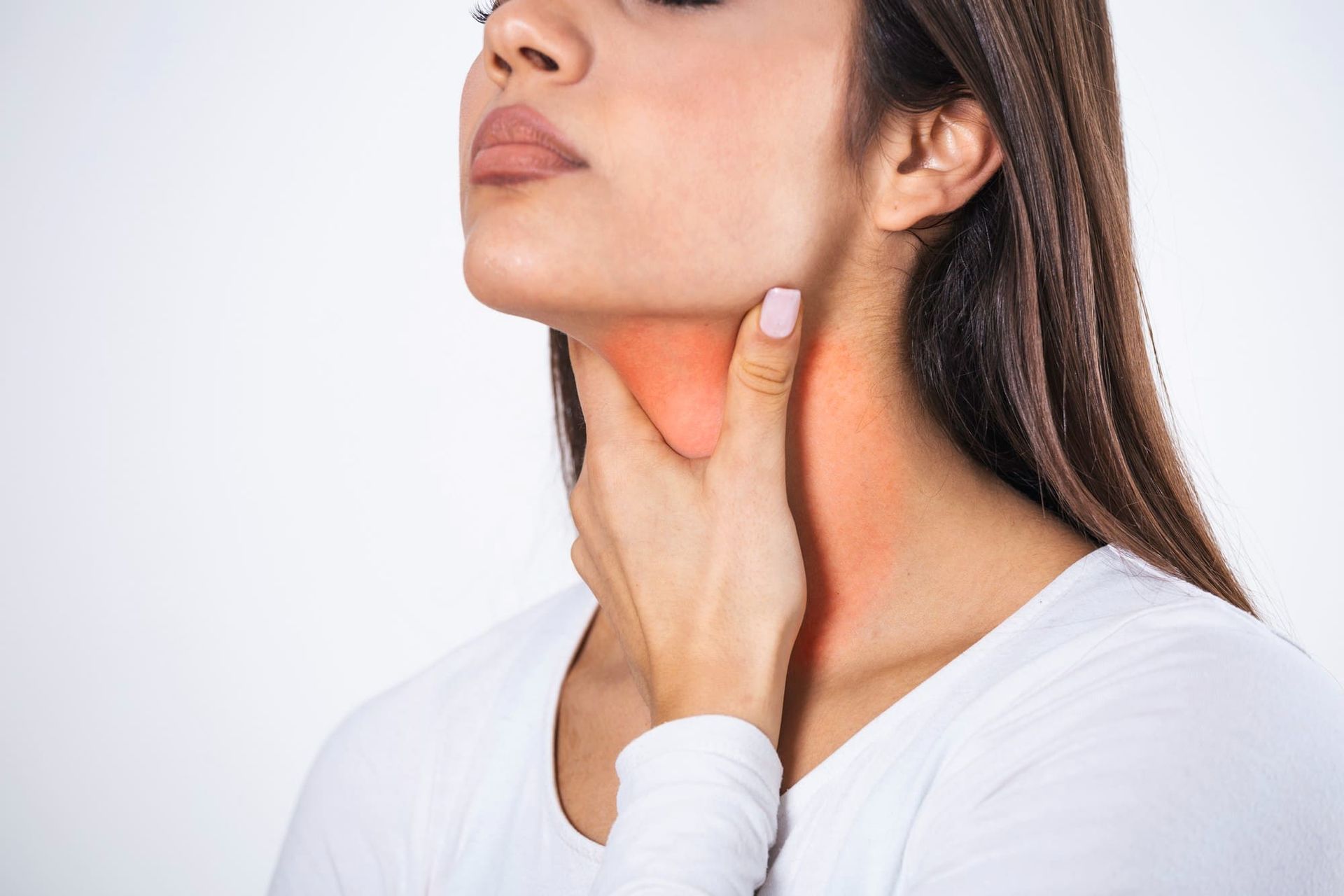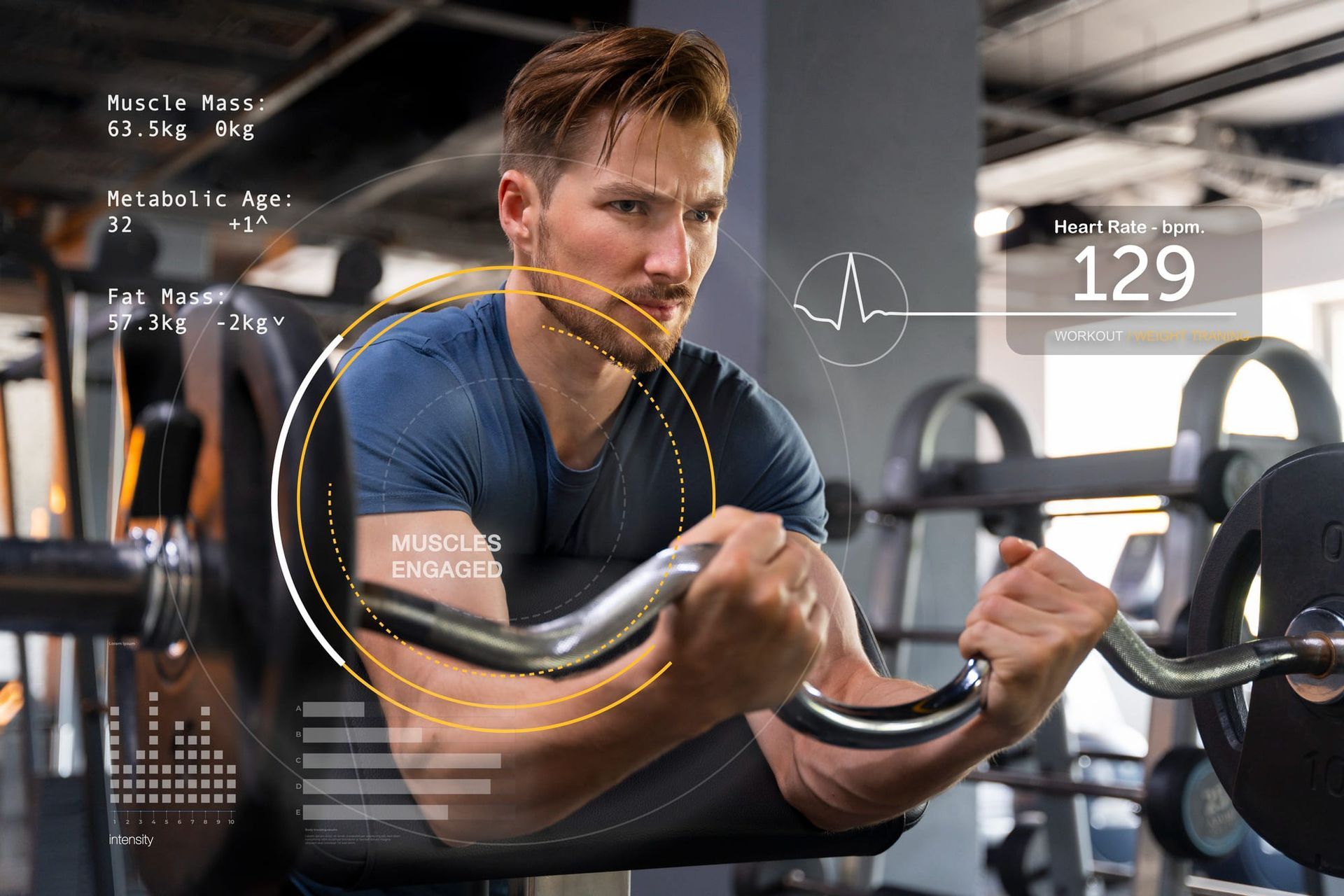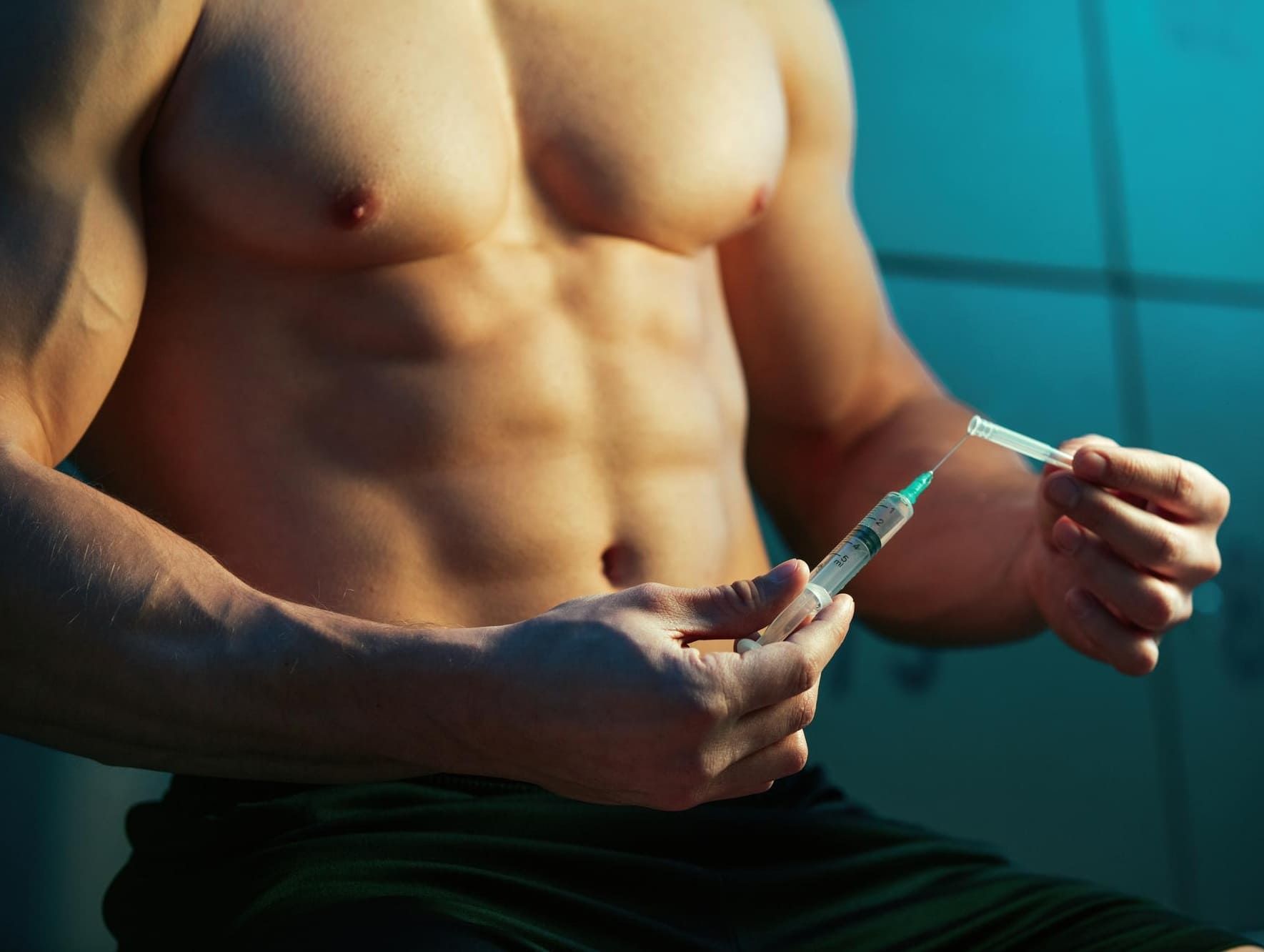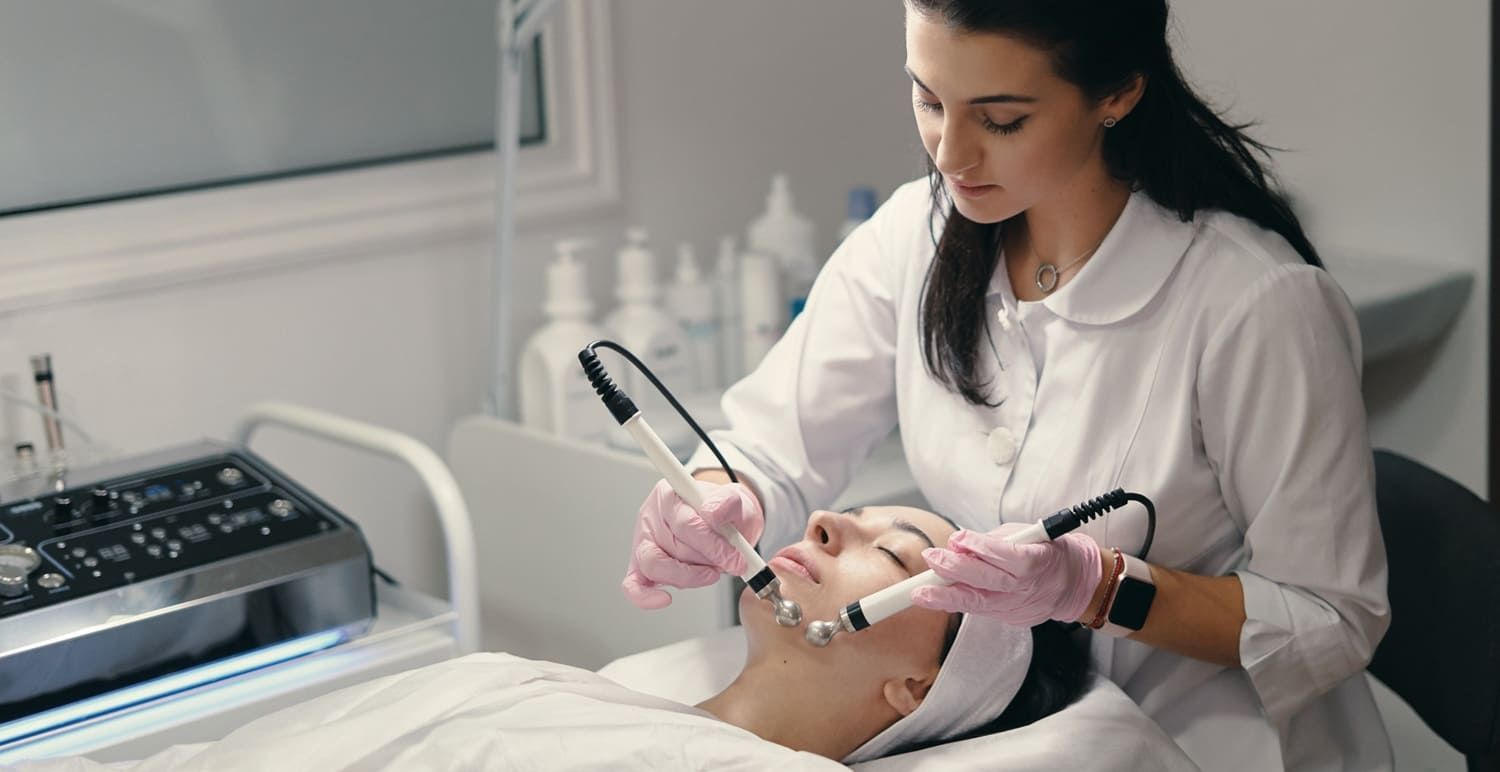Fillers vs. Botox: Which One Do You Need?
Navigating the world of injectables can feel complex when you're aiming for a refreshed, natural look that addresses both expression lines and age-related volume loss. Understanding the nuances between Botox and dermal fillers is key to achieving your desired results. This guide offers a clear comparison, explaining how Botox works to relax muscles and how dermal fillers restore facial volume. We'll explore the best areas for each treatment, their longevity, how they can be combined for comprehensive rejuvenation, and how to pinpoint the perfect injectable plan for you at Pure Health & Hormone Center in Tampa.
In this guide, you'll uncover:
- What Botox is and how it effectively smooths dynamic wrinkles.
- How dermal fillers plump and volumize the skin, softening static lines.
- A straightforward comparison of how quickly each works, how long results last, and potential considerations.
- Synergistic approaches to using both Botox and fillers for a complete transformation.
- The best way to choose your ideal treatment and what to anticipate during your visit.
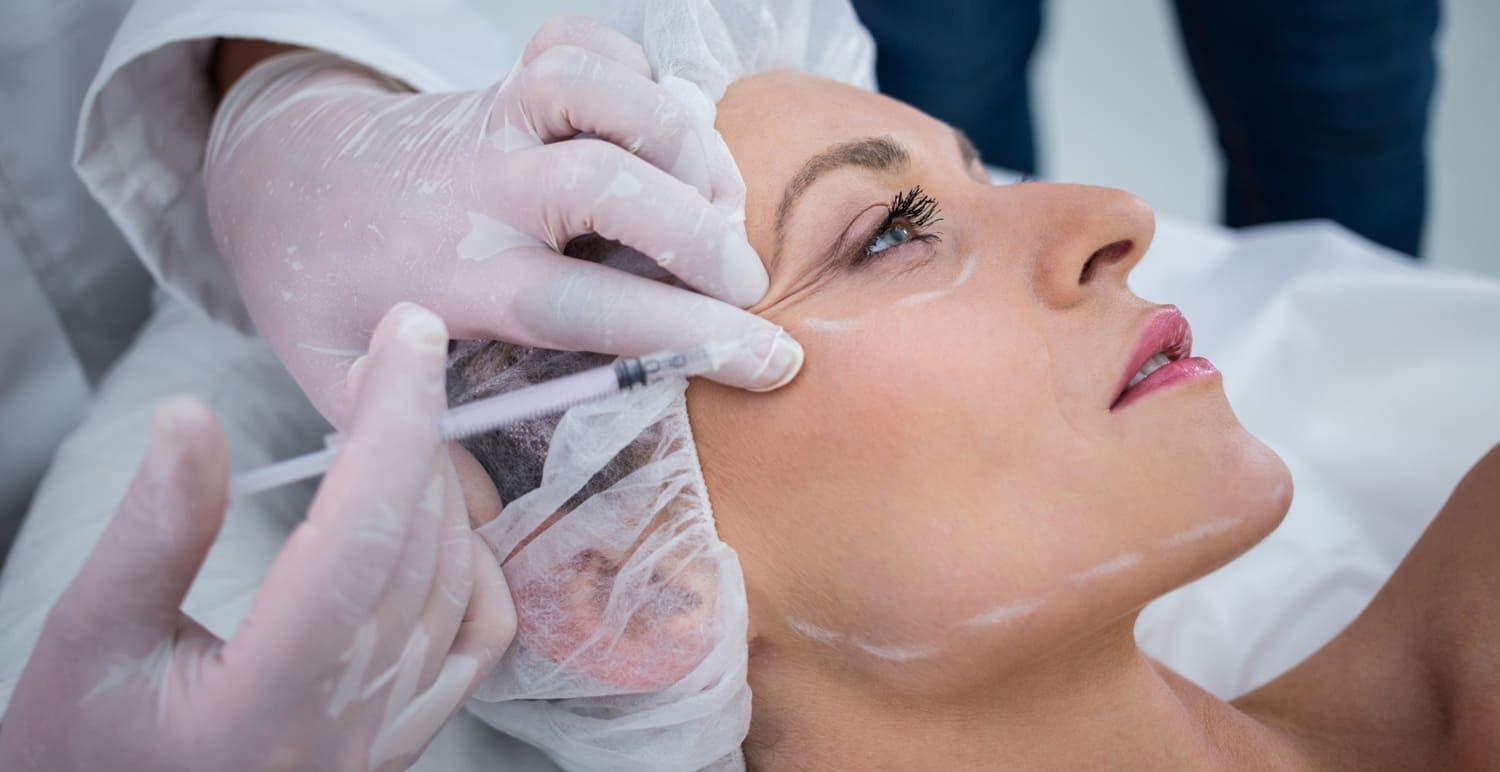
What Exactly Is Botox and How Does It Work for Wrinkle Treatment?
Botox is a refined form of botulinum toxin type A, expertly used to temporarily ease the muscle activity that causes dynamic wrinkles – those lines that appear with facial expressions. By gently blocking nerve signals to specific muscles, it reduces their contractions, softening lines like frown creases and crow's feet within days. Grasping this fundamental principle is essential to understanding Botox's role in facial rejuvenation.
How Botox Works Its Magic
- Botox, also known as botulinum toxin type A, functions by intercepting the release of acetylcholine at the neuromuscular junction. This action prevents muscles from contracting, which in turn softens expression lines. This is the core mechanism behind Botox's ability to reduce dynamic wrinkles.
Botox Unveiled: Definition and Botulinum Toxin Explained
Botox is a sterile, injectable solution containing botulinum toxin type A. This neurotoxic protein works by inhibiting the release of acetylcholine at nerve endings, preventing targeted muscles from over-contracting. The result is a visible softening of wrinkles. For instance, a targeted injection in the glabellar area can noticeably smooth vertical frown lines within about a week, contributing to a more harmonious facial appearance.
Now that we understand what Botox is, let's delve into precisely how it relaxes facial muscles to diminish dynamic wrinkles.
How Does Botox Smooth Dynamic Wrinkles by Relaxing Muscles?
Botox achieves its effect by binding to specific receptors at the neuromuscular junction, effectively blocking the release of acetylcholine. This interruption in nerve signaling prevents overactive muscles from forming expression lines when you smile, frown, or raise your eyebrows. Over time, this reduced muscle activity can even help retrain facial patterns, contributing to longer-lasting smoothness.
Which Areas Benefit Most from Botox Treatment?
Botox is exceptionally effective for dynamic wrinkles, where muscle movement is the primary cause of lines. Key treatment areas include:
- Forehead Lines – Those horizontal lines that appear when you raise your eyebrows.
- Crow’s Feet – The fine lines radiating from the corners of your eyes when you smile.
- Glabellar Lines – The vertical "eleven" lines between your eyebrows.
By precisely targeting these areas, Botox helps create a more relaxed, refreshed appearance, and its applications extend beyond cosmetic uses.
What Are the Medical Applications of Botox Beyond Wrinkles?
Botox's muscle-relaxing capabilities extend to several therapeutic uses:
- Chronic Migraines – It can reduce the frequency of headaches by relaxing muscles in the neck and scalp.
- Hyperhidrosis – It effectively controls excessive sweating in areas like the underarms or palms.
- Bruxism – It can alleviate jaw muscle tension and the effects of teeth grinding.
These medical applications highlight the remarkable versatility of Botox.
What Are Dermal Fillers and How Do They Restore Facial Volume?
Dermal fillers are sophisticated injectable gels designed to replenish lost facial volume, smooth static wrinkles, and enhance facial contours. By carefully introducing biocompatible materials like hyaluronic acid beneath the skin, fillers instantly lift sagging areas and plump regions that have lost fullness. Understanding their definition and various types reveals their distinct approach compared to Botox.
Dermal Fillers: What They Are, Types, Benefits & Side Effects
- Dermal fillers are gel-like substances injected under the skin to add volume, smooth wrinkles, and refine facial contours. Common temporary side effects can include bruising, swelling, redness, and mild discomfort at the injection site.
Dermal Fillers Unveiled: Definition and Common Types
Dermal fillers are composed of substances such as hyaluronic acid, calcium hydroxylapatite, and poly-L-lactic acid, which integrate seamlessly into the subdermal tissue to restore volume. Hyaluronic acid fillers work by attracting moisture to plump the skin, while others, like calcium hydroxylapatite, can stimulate your body's natural collagen production over time. These versatile injectables offer customized lift and contouring to address individual volume needs.
With the types of fillers clarified, let's explore how they effectively smooth static wrinkles and restore volume.
How Do Dermal Fillers Smooth Static Wrinkles and Add Volume?
Dermal fillers work by physically filling in depressions and creases, effectively lifting static wrinkles like nasolabial folds from beneath. Certain fillers also encourage neocollagenesis – the gradual production of new collagen – which helps maintain the skin's natural elasticity and firmness over time. For example, injecting hyaluronic acid into the cheeks can instantly enhance midface volume and provide structural support to the skin.
Which Facial Areas Benefit Most from Dermal Fillers?
Fillers are particularly well-suited for addressing static wrinkles and areas of volume loss, including:
- Nasolabial Folds – The lines extending from the sides of your nose to the corners of your mouth.
- Marionette Lines – The lines that run downward from the corners of your mouth.
- Lips – For adding volume, definition, and a smoother appearance.
- Cheeks – To restore lost volume and create a lifted effect.
By addressing these areas, fillers help create balanced facial proportions and a more youthful, refreshed look.
What Are the Different Brands and Types of Dermal Fillers We Offer?
At Pure Health & Hormone Center, we proudly offer leading filler brands, carefully selected to meet diverse aesthetic goals:
- Juvéderm® – A range of hyaluronic acid fillers ideal for cheeks, lips, and softening folds.
- Restylane® – Versatile HA fillers perfect for subtle contouring and volume enhancement.
- Radiesse® – A calcium hydroxylapatite filler that provides immediate lift and stimulates collagen.
- Sculptra® – A poly-L-lactic acid filler that gradually rebuilds collagen for long-lasting volume.
Exploring Dermal Filler Types
- Hyaluronic acid fillers are a highly popular choice, effectively restoring a more youthful appearance by plumping wrinkles and folds and replenishing lost facial volume. Other advanced options include calcium hydroxylapatite, poly-L-lactic acid, and PMMA, each offering unique benefits for enduring facial rejuvenation.
What Are the Key Differences Between Botox and Dermal Fillers?
Understanding the fundamental distinctions between Botox and dermal fillers is crucial for selecting the most effective injectable treatment for your needs.
Botox vs. Fillers: Choosing the Right Treatment for You
- Botox is best suited for dynamic wrinkles caused by muscle movement, while dermal fillers excel at addressing static wrinkles and areas experiencing volume loss. Combining both treatments can offer comprehensive facial rejuvenation.
The table below provides a clear comparison of their primary action, the types of wrinkles they address, their key ingredients, how quickly results appear, how long they last, and their reversibility, helping to clarify these important differences.
| Feature | Botox | Dermal Fillers |
|---|---|---|
| Primary Action | Temporarily relaxes muscles by blocking nerve signals | Adds volume and structure beneath the skin |
| Wrinkle Type Addressed | Dynamic wrinkles formed by facial expressions | Static wrinkles resulting from volume loss and gravity |
| Main Ingredient | Botulinum toxin type A | Hyaluronic acid (most common), calcium hydroxylapatite, poly-L-lactic acid |
| Onset of Results | Typically 3–7 days | Immediate |
| Duration of Effects | Approximately 3–4 months | 6–24 months, varying by formula and area |
| Cost Structure | Priced per unit | Priced per syringe |
| Reversibility | Effects naturally diminish over time; no direct reversal agent | Hyaluronic acid fillers can be dissolved with an enzyme if needed |
How Do Botox and Fillers Differ in Treating Dynamic vs. Static Wrinkles?
Botox specifically targets dynamic wrinkles by reducing the muscle movements that create them. In contrast, fillers address static lines that are visible even when your face is at rest by replenishing lost volume. Using both treatments in tandem ensures a comprehensive smoothing effect, addressing both expression lines and age-related volume loss.
What Are the Differences in Onset, Duration, and Reversibility?
With Botox, you'll typically see results within a week, and these effects gradually fade over 3–4 months, with no direct reversal option. Dermal fillers offer immediate plumping and lifting, with results lasting anywhere from six months to two years, depending on the specific product used. Importantly, hyaluronic acid fillers can be precisely dissolved if adjustments are needed.
How Do Botox and Fillers Compare in Cost and Treatment Pricing?
Botox is generally priced per unit, with costs varying based on the number of units needed. Dermal fillers are typically priced per syringe, with the average cost reflecting the volume and type of filler used. Pure Health & Hormone Center is committed to transparent pricing and offers attractive package options for combined treatments.
What Are the Common Side Effects of Botox vs. Dermal Fillers?
Both injectables share common, mild side effects such as temporary bruising, swelling, or redness at the injection site. Botox may occasionally be associated with a mild headache or temporary eyelid drooping. Fillers might cause transient lumps or minor discomfort that typically resolve quickly.
Understanding Botox Side Effects
- Common side effects following Botox treatment include temporary pain, swelling, or bruising at the injection site, which usually subside within a few days. Some individuals may experience mild headaches or flu-like symptoms shortly after the procedure.
Can You Get Botox and Fillers at the Same Time?
Absolutely! Combining Botox and fillers in a single treatment session is not only safe but also highly effective. This coordinated approach allows us to address dynamic wrinkles in the upper face with Botox and volume loss in the mid-to-lower face with fillers, maximizing your rejuvenation results while consolidating your visit.
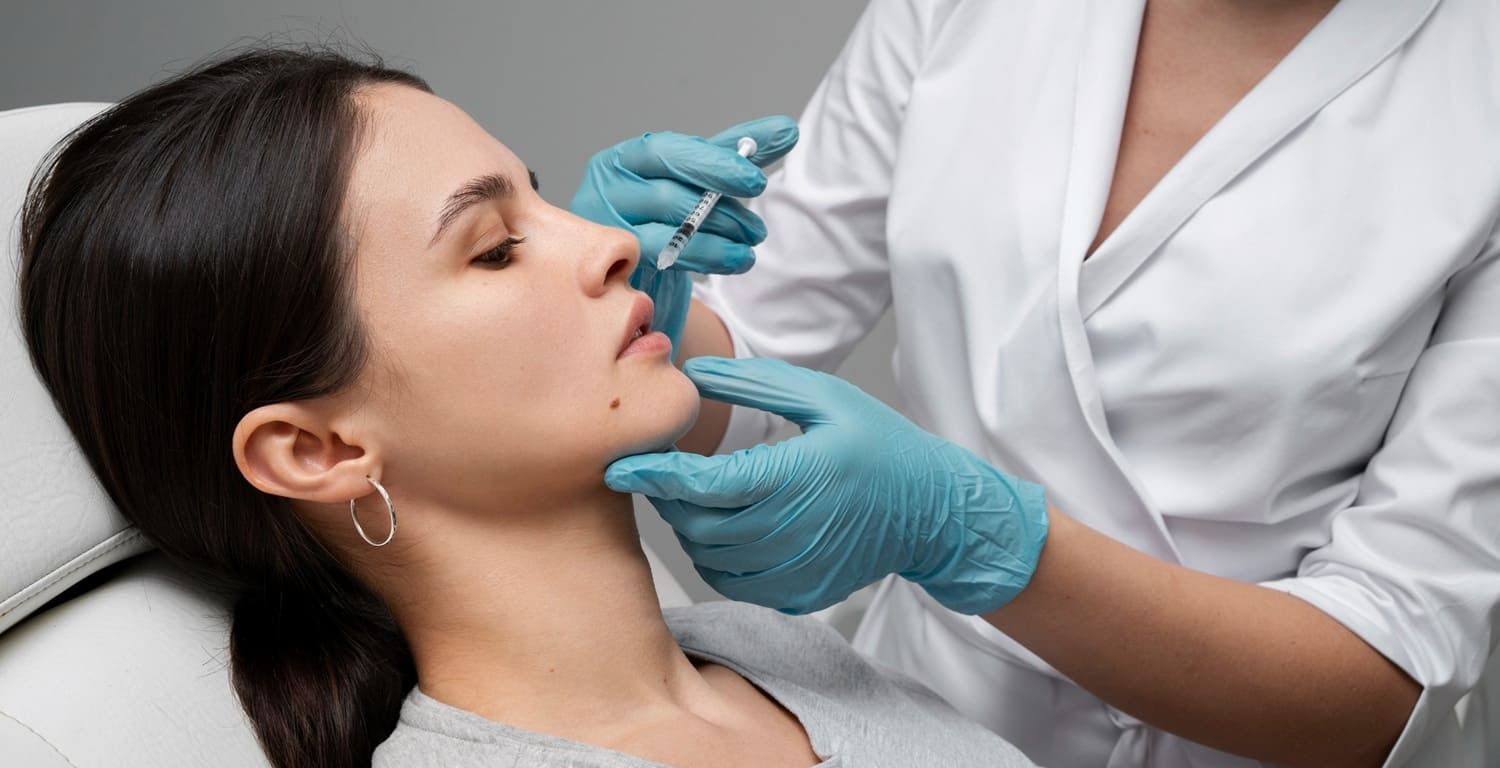
How Can Combining Botox and Dermal Fillers Enhance Facial Rejuvenation?
By synergistically combining the muscle-relaxing power of Botox with the volume-restoring capabilities of dermal fillers, we can achieve a truly comprehensive and natural-looking rejuvenation. This dual approach addresses both dynamic and static lines simultaneously, leading to more harmonious and balanced results.
Why Combine Botox and Fillers for Comprehensive Wrinkle Treatment?
When we relax expression muscles with Botox and replenish lost facial volume with fillers, this combination therapy works on multiple levels to smooth wrinkles. This integrated approach can also extend the overall longevity of your results and optimize your facial contours for a beautifully refreshed appearance.
What Are Common Combination Strategies for Upper and Lower Face?
- Upper Face Focus – Botox is ideal for smoothing forehead creases and crow's feet.
- Lower Face Enhancement – Fillers are expertly used in the cheeks, nasolabial folds, and lips to restore volume and definition.
- Ongoing Refreshment – Strategic follow-up sessions, typically every 3–6 months, help maintain your results.
This comprehensive protocol ensures consistent rejuvenation and balanced volume across your entire face.
How Does Combining Treatments Affect Longevity and Results?
Patients often find that combining Botox and fillers leads to more enduring and cohesive results. The fillers provide structural support, while Botox reduces the muscle activity that can stress these newly restored areas. This synergy means your refreshed look can last longer than with standalone treatments.
How Do You Choose Between Botox and Fillers for Your Personalized Treatment?
Selecting the right injectable treatment is a personalized journey, influenced by factors such as your skin's condition, the types of wrinkles you have, your age, and your specific aesthetic aspirations. A thoughtful, tailored approach ensures you receive the most effective treatment for your unique needs.
What Factors Should Influence Your Choice?
Key considerations include:
- Wrinkle Type – Are your lines dynamic (from movement) or static (visible at rest)?
- Volume Loss – How much facial deflation are you experiencing?
- Skin Elasticity – What is the underlying support from your natural collagen?
- Aesthetic Goals – Are you seeking a natural lift, fine-line smoothing, or enhanced contouring?
Carefully evaluating these aspects will guide you toward the best option, whether it's Botox, fillers, or a combination plan.
Why Is Expert Consultation Essential for Injectable Treatments?
A consultation with a board-certified specialist is invaluable. They will thoroughly assess your medical history, facial anatomy, and cosmetic objectives to craft a truly customized injectable plan. This expert guidance minimizes risks and ensures optimal placement, dosage, and timing for your treatment.
How Does Pure Health and Hormone Customize Injectable Treatments in Tampa?
At Pure Health & Hormone Center, our skilled practitioners utilize advanced assessment techniques and collaborative discussions to design individualized treatment protocols. We expertly combine neuromodulators and filler options to achieve your desired aesthetic outcomes, always prioritizing your safety and the preservation of natural facial expression.
What Should You Expect During and After Botox or Filler Procedures?
Being well-informed about the injection process, the recovery timeline, and how to maintain your results will help ensure a smooth, stress-free treatment experience with minimal downtime.
What Is the Procedure Like for Botox and Dermal Filler Injections?
Both Botox and dermal filler treatments are minimally invasive procedures performed conveniently in our office. After cleansing and marking the target areas, very fine needles are used to deliver precise doses of the chosen injectable. Sessions typically take between 15–30 minutes, and most patients can resume their normal activities immediately afterward.
What Are the Typical Recovery Times and Side Effects?
Most patients experience only mild swelling or bruising, which usually resolves within 24–48 hours. No general anesthesia or extended recovery period is necessary, making these popular "lunchtime" procedures for busy individuals in Tampa.
How Do You Maintain and Prolong Your Injectable Results?
To preserve your refreshed appearance, follow-up sessions are recommended approximately every 3–4 months for Botox and periodic touch-ups for fillers (typically every 6–18 months, depending on the product). Complementing your treatments with a consistent skincare routine that includes sunscreen, antioxidants, and ingredients that support collagen can further enhance and extend your results.
What Are the Most Frequently Asked Questions About Botox and Fillers?
Patients often have key questions when considering injectables, and we've addressed the most common ones:
- The fundamental difference between muscle-relaxing Botox and volume-restoring fillers.
- How the longevity and timing of results compare between the two treatments.
- The safety profiles and potential side effects for each.
- The possibility and benefits of undergoing simultaneous Botox and filler sessions.
- Information on affordable pricing and package options available in Tampa.
Understanding these frequently asked questions can help streamline your decision-making process and guide you toward the most suitable injectable strategy for you.
Invest in your confidence and embrace a more youthful glow by scheduling a personalized consultation with Pure Health & Hormone Center in Tampa, FL. Our expert team is dedicated to guiding you through the best Botox and filler options, meticulously tailored to your unique facial anatomy and aesthetic aspirations.




